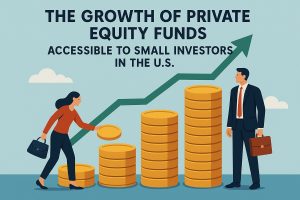Creating a blog post about “18 Financial Risk Management Strategies for Small Investors in the USA” is a great way to provide valuable insights for individual investors looking to protect their investments. In this post, we’ll discuss various tactics to effectively handle potential financial risks, keeping small investors informed and prepared.
Managing risks is crucial in the financial world, especially for small investors looking to build wealth in a sustainable manner. Understanding and implementing financial risk management strategies allows small-scale investors to minimize losses and maximize returns. In this blog post, we dive into 18 tactics tailored for individual investors in the USA, providing insights on how to safeguard assets and achieve investment goals.
Building a solid financial foundation

Before diving into advanced risk management strategies, establishing a solid financial foundation is key. This means having a clear understanding of your financial situation, including income, expenses, and net worth.
Developing a budget can help you track where your money goes and identify areas for improvement. Budgeting not only helps manage daily expenses but also sets the stage for effective financial planning. Another essential element of a strong financial foundation is building an emergency fund.
This cash reserve acts as a financial cushion in case of unexpected events such as job loss, medical emergencies, or major repairs. Experts recommend having three to six months of living expenses saved in a liquid and easily accessible account.
Additionally, reducing high-interest debt is crucial for small investors. Carrying significant debt, especially with high-interest rates, can be a major financial burden and increase overall risk. Focus on paying down these debts to free up capital for future investments and reduce financial stress.
Diversification as a primary strategy
Diversification remains one of the most effective risk management strategies for small investors. By spreading investments across different asset classes, industries, and geographical regions, individuals can reduce the impact of poor performance in any single asset. A diversified portfolio typically includes a mix of stocks, bonds, real estate, and perhaps even alternative investments.
To achieve optimal diversification, it’s crucial to conduct thorough research on potential investments. Understanding the risk-reward profile of each asset aids in creating a balanced portfolio. Tools like index funds and ETFs can provide easy access to a diverse range of investments, helping individuals achieve broad market exposure at a lower cost.
Rebalancing the portfolio regularly is another important aspect of maintaining diversification. As market conditions change, the value of assets in a portfolio can vary, leading to a drift from the original asset allocation. Periodic rebalancing ensures that the portfolio remains aligned with the investor’s risk tolerance and financial goals.
Understanding and managing investment risks
Identifying and understanding the various types of investment risks is essential for effective risk management. Key risks include market risk, liquidity risk, and inflation risk, among others. Market risk is the potential for an investment’s value to fluctuate due to changes in the overall market.
Liquidity risk involves the ease with which an asset can be converted into cash without significantly affecting its price. Holding illiquid assets can pose a challenge if immediate cash is needed, so balancing liquid and illiquid investments is important.
Inflation risk pertains to the eroding purchasing power of money over time. Investments such as inflation-protected securities can help counteract this risk. Staying informed about economic trends and adjusting investments accordingly can further mitigate these risks.
Developing a disciplined investment approach
A disciplined investment approach involves adherence to a well-defined plan, focusing on long-term objectives rather than short-term market fluctuations. Developing a clear investment strategy helps guide decision-making and maintain consistency in the face of market volatility.
Regularly reviewing and adjusting your investment plan is crucial for staying on track. Life circumstances and financial markets are constantly changing, so it’s vital to revisit your strategy periodically and make necessary adjustments. This ongoing evaluation ensures that the investment approach remains aligned with your evolving goals and risk tolerance.
Utilizing professional guidance
Seeking professional advice can be a valuable tool in risk management for small investors. Financial advisors provide expertise and tailored guidance, helping investors make informed decisions and avoid common pitfalls. They can also offer insights into developing effective strategies that align with individual needs and preferences.
Even with professional guidance, maintaining an active role in managing your investments is important. Stay engaged with your financial plan, ask questions, and ensure that your advisor’s recommendations align with your personal financial goals and values.
Leveraging technology for better management
In today’s digital age, technology offers numerous tools for improving financial management. From budgeting apps to advanced investment platforms, technology can enhance various aspects of risk management for small investors.
Budgeting applications can streamline financial tracking and help users stay on top of their finances. These tools provide insights into spending patterns and opportunities for optimization, contributing to a more robust financial foundation.
Investment platforms and robo-advisors offer convenient solutions for portfolio management. These platforms use algorithms to recommend optimal investment strategies, assisting investors in achieving diversified portfolios tailored to their risk tolerance and financial objectives. Embracing technology can make financial management more efficient and accessible, empowering investors to make informed choices.
By adopting these strategies, small investors in the USA can effectively manage financial risks and work towards achieving their financial aspirations. Whether it’s building a strong foundation, diversifying a portfolio, or seeking professional guidance, a proactive approach empowers individuals to navigate the complexities of investing with confidence.



